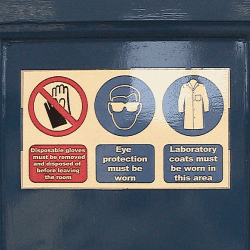
Are People at The Top Keeping You From Being Safe?
In honour of National Safety Month, it's time to bring up an important issue that may be weighing on your mind as someone responsible for safety leadership at your organization. Like many Safety Captains, Officers, Managers and Directors, you're definitely no stranger to challenges when it comes to getting everyone to comply with a safety program. These challenges can come from several sources, including employees and even upper management, which can leave you feeling like you're stuck between a rock and a hard place. How are you supposed to do your job effectively if it seems like no one values what you're doing?
Resistance from Employees
While everyone can agree that safety is important, commitment to upholding workplace safety measures isn't always an employee priority. Why not? In the case of employees consistently following safety policies and procedures, the urge to just ‘get the job done' can sometimes overshadow the time and care required to ensure everything is being done safely. A safety program is often seen as an inconvenience. Corners get cut; mistakes are made; and you become frustrated. That is, of course, until someone actually gets hurt… then the value of safety suddenly becomes apparent, but by then, it's too late.
Resistance from Management
Perhaps the most challenging form of resistance can come from upper management. Of course executives understand in principle that the time and money invested in safety programs is worthwhile in the long run, but it's sometimes hard to quantify that benefit when the safety program is actually working. How do you know something is worthwhile until you see just how much time and money can be lost because of an accident? It can be hard to measure the ROI of ‘what if'. This can become especially problematic when employees can see that management doesn't care whether or not safety procedures are followed.

What Can You Do?
We can all agree that both executive and employee commitment are crucial to a successful safety program. But how can you combat resistance from these instrumental parties? Strong leadership is required to achieve safety excellence and build a workplace culture that abides by safety policies as second nature. That leadership comes from you, but it also has to come from other leaders within the organization.
Unfortunately, changing the minds of executives can be even more challenging. How can you get corporate leadership to value safety as much as you do? Speak up! Let them know that their commitment is just as crucial to success as the commitment that comes from the workers on the warehouse floor or construction site. After all, if the people at the top aren't fully onboard with a program, how can anyone expect that others will be? Explain that everyone in upper management – not just the Safety Captain – should be leading by example and demonstrating their belief that a strong safety program is in everyone's best interests, and it shouldn't have to take someone getting injured on the jobsite to see the value in it.










